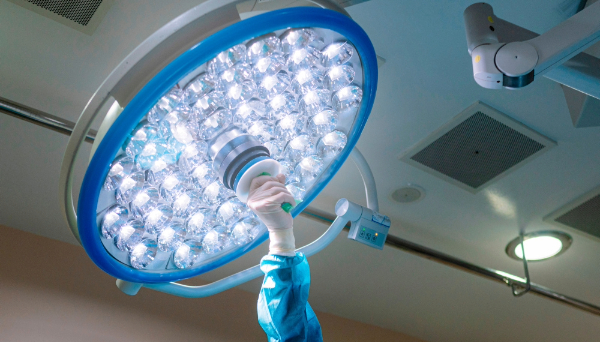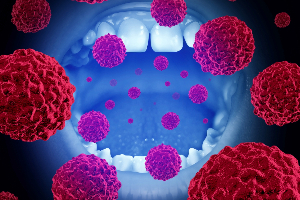
Oral cancer, also known as mouth cancer, refers to cancers that develop in any part of the mouth including the lips, tongue, gums, palate, inner cheeks, and minor salivary glands. Oral squamous cell carcinoma (OSCC) is the most common oral cancer and ranks as a “top 10” cancer globally in the male population. Annually, approximately 370,000 new cases of oral cancer are recorded worldwide, with an incidence rate of 7.1 per 100,000 people. Moreover, approximately 200,000 deaths related to oral cancer are estimated each year, with a mortality rate of 3.8 per 100,000 people. The highest mortality rates are observed in Eastern Europe, South Asia and Southeast Asia as well as in Latin America. Incidence and mortality rates are higher in men than in women across all age groups.

Disparities in the worldwide occurrence of this disease are primarily attributed to differences in lifestyle and exposure to risk factors, such as tobacco, alcohol, betel quid and sun exposure, in the case of lip cancer. Although it may not be as widely discussed as other types of cancer, oral cancer is a significant health issue that affects people of all ages. It not only results in significant mortality but also causes extensive facial disfigurement, loss of oral functionality (including speech and swallowing), economic and psychological burden.
The importance of early diagnosis
Early diagnosis and effective treatment play a pivotal role in improving patient outcomes and reducing the mortality rates associated with oral cancer. However, most cases are detected at a late stage, when treatment is complex, costly, and yields poor results. Early diagnosis is a cornerstone of mitigating the impact of oral cancer, but its importance is a particularly critical dimension in a global context. Access to healthcare services, awareness, and resources varies significantly from region to region. Therefore, it is paramount to develop strategies that can be effectively implemented in diverse healthcare settings to ensure equitable access to early diagnosis at a global scale.
What are the current perspectives on global oral health?
In 2015, the United Nations formulated 17 Sustainable Development Goals (SDGs) within the Agenda 2030 Action Plan to achieve peace, prosperity, and well-being for all by 2030. SDG 3 aims to ensure a healthy life and promote well-being for people of all ages. However, achieving this goal is not possible unless countries adopt integrated approaches to address non-communicable diseases, including strategies to combat the burden of oral diseases.

Interestingly, oral health is not explicitly mentioned or addressed within the context of SDG 3. Conditions such as dental caries, periodontal diseases, and oral cancer affect a staggering 3.58 billion people worldwide, making them the most common and preventable non-communicable diseases afflicting humanity, so oral health is fundamental to achieving good health and well-being and serves as the foundation for SDG 3.
In response to this, the International Dental Federation (FDI) and the International Association of Dental Research (IADR) have issued a joint statement advocating for the inclusion of oral health in Agenda 2030 for Sustainable Development. The interplay between oral health, general health, and overall well-being is undeniable and should not be underestimated. It is imperative to raise global awareness within the dental and oral health sciences community to prioritize oral health care, promote oral health, and ensure universal health coverage.

Strategies for reducing risk
Strategies to reduce the risk factors associated with oral cancer, such as tobacco and alcohol cessation, as well as promoting regular oral examination, must be tailored to the unique challenges faced by communities worldwide. Cultural factors, socioeconomic disparities, and healthcare infrastructure/access play a role in shaping the landscape of prevention efforts.

Oral cancer disproportionately affects economically vulnerable individuals, and reducing social inequalities necessitates the implementation of national policies coordinated with broader health and social initiatives. This approach, known as the common risk factor approach, is based on controlling the environment, ensuring access to safe water, providing adequate food, conducting public and professional education campaigns on early signs and symptoms, facilitating early diagnosis and treatment, applying evidence-based treatments appropriate to available resources, and offering thoughtful rehabilitation and palliative care.
Call for Papers!
Mouth Cancer Awareness Month is an annual initiative that encourages individuals and communities to learn more about the disease, its risk factors, and, most importantly, how early detection and prevention can be achieved to save lives. In line with this alarming international scenario, BMC Oral Health has recently launched a new Collection ‘Early detection and prevention of oral cancer’ dedicated to recruiting cutting-edge research advancements, innovative methodologies, and clinical insights for the early diagnosis and prevention of oral cancer.
By promoting knowledge sharing and collaboration, we hope to contribute to the ongoing efforts to combat this disease.
Submission deadline: 31st of May 2024.
Comments